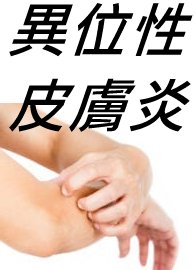| title | Medical Cases of Fan Zhonglin |
Guo, female, 24 years old, diagnosed in March 1979. For the past 3 years, she has frequently experienced intermittent low-grade fever. In March 1976, she had a common cold with fever and was treated with common cold infusion granule and tetracycline. Since then, she often feels fear of cold and fever, frequently suffers from tonsillitis and arthralgia. Axillary temperature usually ranges between 37.4~38℃, occasionally above 38℃. Blood sedimentation rate was 25 mm/hour, while other tests like white blood cell count and basal metabolic rate were normal. After kanamycin injections, the fever temporarily subsided but remained intermittent. Since early 1978, she has had fever twice daily, with temperatures around 37.5℃, and despite treatment, it has not been cured.
Initial consultation: March 1st. This morning, she felt fear of cold and fever, with a body temperature of 37.4℃, fear of cold and fever, body without sweating, pain in both Xiguan (LR7) joints, normal complexion, pale red lips, tongue texture pale red and moist, slightly purplish-dark, with a yellow and white greasy coating, and a floating and tight pulse. This is Taiyang (EX-HN5) cold-damage disease exterior excess pattern, and the treatment should aim to open the pores to induce sweating, calm the interior and expel the exterior, using Ephedra Decoction as the main treatment. Prescription:
Ephedra 10g, Cinnamon Twig 6g, Liquorice Root 18g, Bitter Apricot Seed 15g, two doses.
The "Cold-Damage Disease Treatise" states: "Taiyang disease, headache and fever, body pain and lumbago, joint pain, aversion to wind, without sweating and panting, Ephedra Decoction is the main treatment." These are the main symptoms of Taiyang (EX-HN5) cold-damage disease. Ke Yun-bo once pointed out: "Ephedra eight symptoms... focus on fever and body pain, without sweating and panting." This patient did not have lung qi stagnation, so there was no panting, but the other main symptoms of Ephedra Decoction were present. The tongue texture was pale red and moist, with a white coating, indicating cold signs. This tongue texture, along with a pale yellow coating and a slightly purplish-dark tongue, suggests long-standing cold stagnation. The floating pulse indicates an exterior condition, and the tight pulse indicates cold. The cold evil constricts the exterior, preventing the yang qi from dispersing, thus causing fever. This is not Yangming excess heat, so although there is fever, it is not severe, and although it is intermittent, it is not comparable to tidal fever. Cold governs hiding and storing, causing the skin and hair to close, thus the body without sweating. Nutrient-defense stagnation leads to the loss of normal defensive functions, hence the fear of cold. The cold evil stagnates between the meridians, and the yang qi is not relaxed, thus causing joint pain.
Second consultation: March 3rd. After taking the medicine, she felt slight sweating, aversion to cold decreased, the purplish-dark tongue gradually receded, the coating was white and slippery with a slightly yellow root, and the pulse was thin, slightly slow. There was still slight fever, and the disease remained in Taiyang (EX-HN5). After taking Ephedra Decoction, fever and chills both decreased, but now there is body sweating and a slightly slow pulse, indicating nutrient-defense disharmony. The treatment should aim to unblock yang and release the exterior, harmonizing nutrient and defensive aspects, using Cinnamon Twig Decoction with modifications as the main treatment. Prescription:
Cinnamon Twig 10g, Peony Root 10g, Prepared Liquorice Root 6g, Fresh Ginger Rhizome 60g, Chinese Date 10 pieces, Blackend Swallowwort Root 12g.
Third consultation: March 8th. After taking three doses of the above prescription, the fever subsided. For the past two days, there has been no low-grade fever, with a body temperature of 36.7℃. There is occasional brief pain in the Xiguan (LR7) joints, slight dizziness, and many dreams, but otherwise, there are no significant discomforts, and the tongue and pulse have returned to normal. A small amount of harmonizing nutrient and defensive aspects medicine is prescribed to consolidate the treatment effect, and she is advised to pay attention to diet and daily life to avoid recurrence.
Follow-up on July 17th: the patient reported that since taking the medicine after the second consultation, the low-grade fever has subsided and has not recurred, and she has been feeling well.






